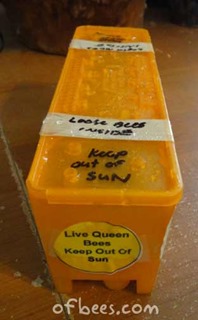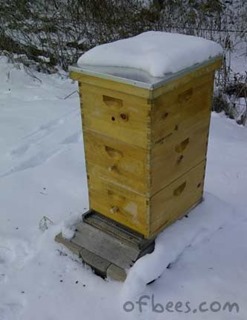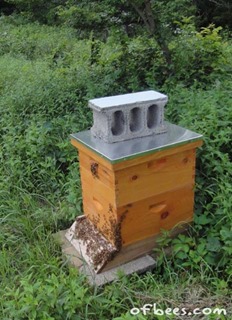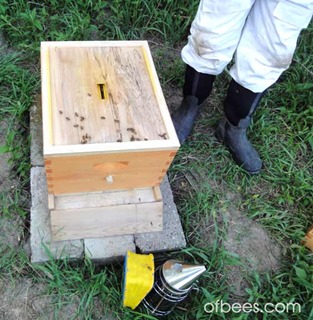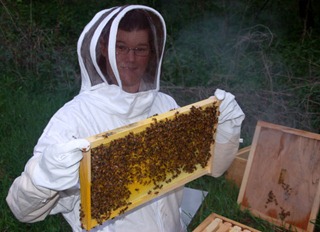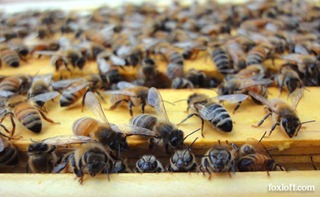We had decided to get bees, we had taken a class about beekeeping, we had read our books, we had the backing of many generous sponsors – so now what? The first step was to get the supplies we needed to house and care for the bees.
We placed our order with a large local beekeeping supply company, Mann Lake, and a few weeks later a truckload of supply boxes was delivered to our front door. We had to assemble the bee boxes (which form the ‘home’ in which the bees build their nest) from pieces, which involved a lot of nailing, gluing, sanding, priming, and painting. We decided to stick with as natural of materials as possible, so chose to finish the boxes with natural stain and wax instead of latex or oil based paints. We stained each of the stacks to be a slightly different color – the reason you usually see bee boxes in such varied colors is that each bee orients itself to its hive when it flies out of the nest – and they use visual clues like color to find their way home. A bunch of solid white hives one next to the other in a row can leave a bunch of very confused bees.
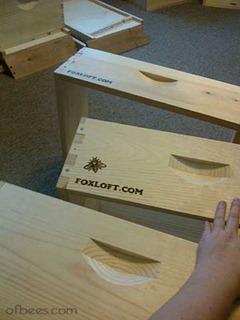

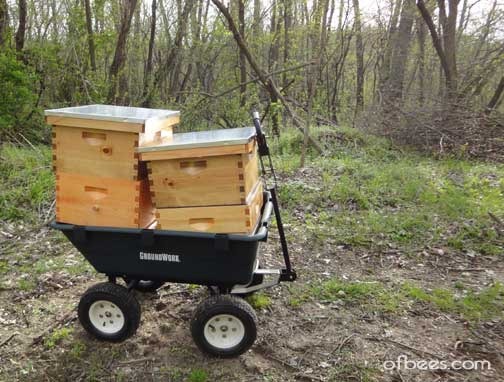


 August 1st, 2013
August 1st, 2013  Foxfeather Ženková
Foxfeather Ženková 